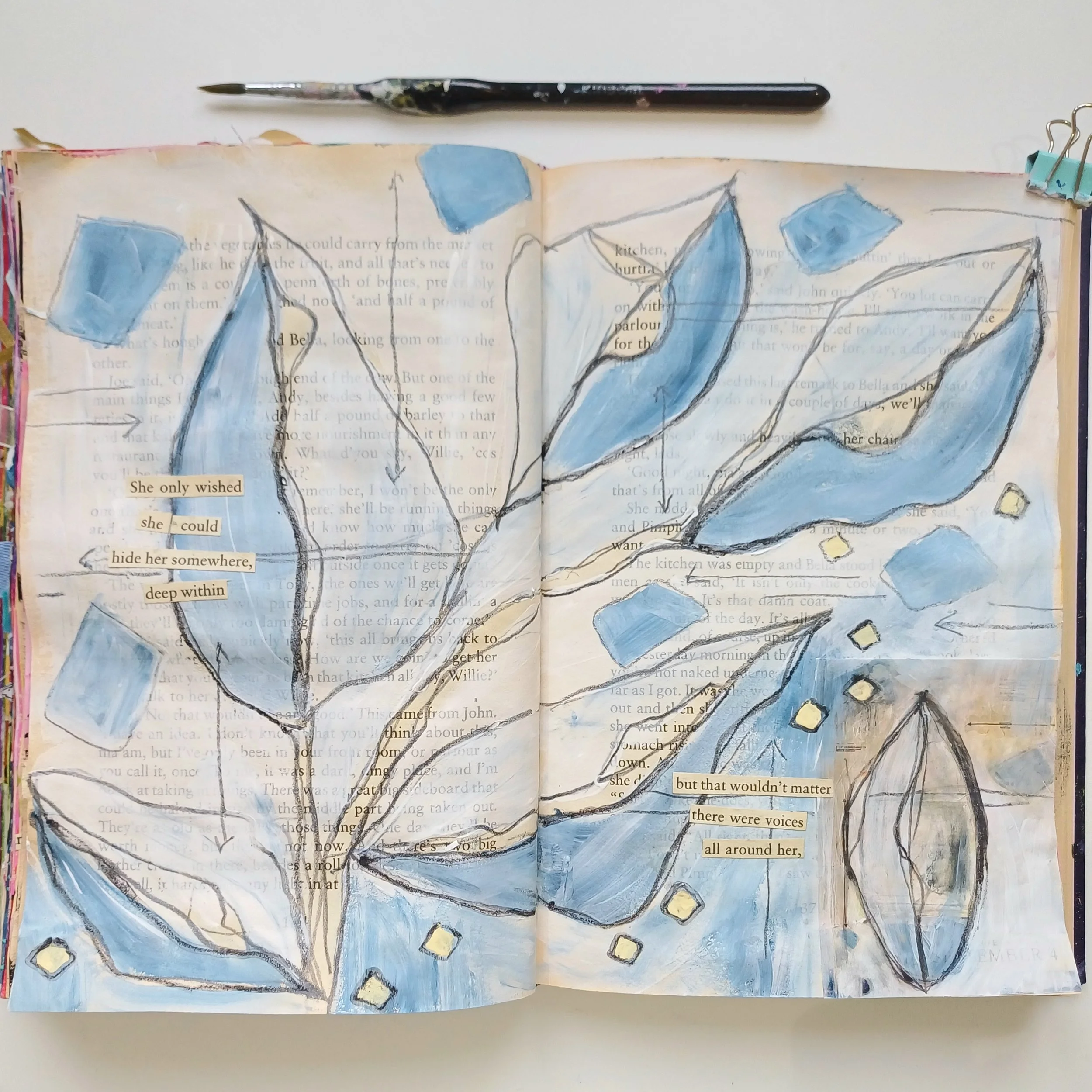“I make art because sometimes I don’t know what I’m feeling until I see what I paint” – Anonymous
What you can Expect
Personalized to suit your life journey
“So what, exactly, does a Therapeutic Art Facilitator do?”
It’s a question I get a lot.
My role is to help clients tap into their own courage, creativity, and strength during challenging times and support them on their healing journey. The result?
I often start my work with clients in what I call the “messy middle”—that point where you might feel lost, overwhelmed, anxious, frustrated, scared, or helpless.
Whether you’re dealing with a major life transition like a move, divorce, or new job, or have experienced trauma resulting in PTSD, I’m here to provide support. If you know something needs to change but need help making it happen, I’m here for you.
I offer you space to explore, ask powerful questions, provide creative outlets, and gently challenge you so you can truly connect with yourself. When you fully engage with yourself, showing up in other areas of your life becomes easier.
My approach blends everything I know: lessons from a life that hasn’t always gone as planned, extensive art experience, a decade of journaling and art journaling, my expat journey of living and working in 13 different countris, and my Canadian Art Therapy Certification.
My trauma-informed approach is intuitive and co-creative, while remaining deeply rooted in strategic thinking. I blend art and life experiences, showing up fully with both my head and heart, and leaving a little room for magic.
My Role as a Therapist Art Facilitator
As a Therapeutic Art Facilitator, I use creativity to help you explore your emotions and express yourself. My goal is to guide you in finding new ways to handle life’s challenges. I’m here to support you in managing internal struggles, making positive changes, and tackling daily issues with more confidence.
Active Participation: Your involvement is crucial. I create a safe and structured space, introducing routines and practices that suit your needs. Your engagement helps shape our work together and is key to building trust, setting goals, and making progress.
Person-Centered Approach: I value your uniqueness and believe you know what’s best for yourself. Your perspective guides our sessions.
Focus on the Art-Making Process: We’ll focus on the creative process and your interaction with art materials, rather than just the end result. It’s about experiencing, feeling and learning from the process itself.
Creative Dialogue: Through our conversations during the art-making, we’ll connect with your creations and with each other. This dialogue helps you reach personal insights and goals.
Creating a Safe Space: I begin by ensuring you feel secure as we explore your journey. Together, we’ll find meaning, broaden your outlook, and connect with your purpose.
Exploring the Unconscious: We’ll delve into deeper, often unconscious experiences to bring insight and healing, helping you understand and address significant internal patterns.
Therapeutic Art is for Everyone
Therapeutic Art requires NO prior artistic skills. Part of my mission as a Therapeutic Art Facilitator is to help you discover that you don’t need a special skill or talent in order to enjoy and benefit from the arts. Art making in this context is focused on personal expression, ensuring that previous art experience is not a prerequisite for your participation.
What You Can Expect During our Therapeutic Art Session
In our Therapeutic Art sessions we follow a consistent routine that adapts to your needs. Each session begins and ends in a way that aims to bring you comfort, relief, and relaxation. You’ll have access to your art materials allowing you to use watercolor painting, oil pastels, clay, weaving, collage, and splatter painting—whatever you feel most comfortable using.
Check-in: We start each session with a check-in where you share your current feelings and body sensations. This helps us determine the best approach for the session, based on how which specific emotions you want to express and process.
Directive: Together, we choose a therapeutic approach that suits your needs. This may involve verbal communication, written expression, and various art forms.
Art Making: The focus is on the creative process, allowing you to express yourself, explore your emotions, and grow personally. Whether you’re drawing, painting, or creating, the goal is to weave your experiences into meaningful stories.
Interpretation and Gaining Insight: After creating your art, we’ll discuss its meaning and how it relates to your experiences. This might involve conversation, storytelling, or metaphors, helping you gain insight and find new ways to address challenges.
Check-out: We end the session with a check-out, giving you a chance to reflect on what we’ve explored and share your thoughts and feelings about the session.
Goal Setting: We set and review personalized goals together, ensuring they align with your unique needs and adjusting them as needed throughout our journey.
FAQ
-
It is a therapeutic practice that uses creative processes, like drawing, painting, or sculpting, to help individuals express and explore their emotions.
It provides a safe space to communicate feelings, gain insights, and work through challenges, promoting emotional healing and personal growth.
-
No, you don’t need any artistic skills or experience. The focus is on the process of creation and self-expression, not on the artistic quality of the work.
-
Art therapy helps by providing a safe outlet for expressing difficult emotions and experiences, which can be particularly useful for processing trauma, managing anxiety, and developing coping strategies.
-
I will guide you on how to use various materials and help you feel comfortable with the creative process.







